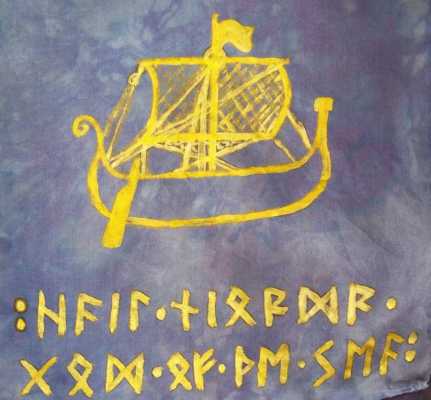Gnosis Diary: Life as a Heathen
My personal experiences, including religious and spiritual experiences, community interaction, general heathenry, and modern life on my heathen path, which is Asatru.
The Heathen Worldview
What is "the heathen worldview?" That's a topic that comes up on heathen forums regularly. This is my attempt to answer it.
With so many cultures and time periods to choose from on which to base heathen practice, there are bound to be many differences between various heathen paths. On the old Asatru MSN Group, which I used to manage, I put a welcome message on the landing page that advised newcomers that "there is no Asa-Pope." Today, Asatruars are still quoting it, so it must have resonated with the Asatru community. In other heathen traditions, though, there are central authorities. For example, the various forms of Theod each have a king. Both Asatru and Theod based their leadership structures on historical examples, but from different countries.
I do think there are some things that all heathen paths have in common. Here's my list. Of course, I'm not the Asa-Pope either, so others will have different opinions.
1. Respect for the land and the land wights (nature spirits.) Respect for the sea, etc. Reverence for nature.
2. Respect for lore and tradition. A desire to examine and debate same, particularly what counts as lore and what, and from what time periods, counts as tradition, and how to interpret same. (Asatru has a canon built by consensus process, in a decentralized manner, which we call "the lore.")
3. The inclusion of several gods within the tradition, even if individual adherents are not interested in any or all of them. (It is possible to be heathen and to not be interested in having a relationship with any gods.) All the heathen paths have a few major gods in common, who are known by several variations of their names, such as Thor / Thunor, Odin / Odhinn / Wotan, Freya / Frowe, etc. Different sects and different individuals include additional gods.
4. The inclusion of several other categories of beings, including dead ancestors, and possibly elves, norns, etc., even if individual adherents are not interested in any or all of them.
5. There is no supernature. That is, nothing is above nature. The physical world is not inferior to the spiritual world. Being spiritual does not require abandoning material goods, nor mortification of the flesh. The gods and other beings of the tradition are not separate from nature.
6. The afterlife has just as many different possibilities as there are gods and other beings. Rather than a duality of one Heaven and one Hel, there are many halls of gods, ancestors, elves, etc., Hel is one realm of one goddess and is not bad or a punishment, and there is also the possibility of rebirth.
7. The story of the gods and the universe is complicated and gray, and the way we tell it firmly centers humanity. It's not a story of good versus evil so much as life versus death. What is good is defined through the lens of humanity as that which benefits humanity, with particular weight given to that which benefits one's own, that is, one's own family, town, tribe, etc.The primary difference between a god and a being that's not a god is whether it has a beneficent attitude toward human beings. (Most of our gods live in Asgard, hence the name Asatru, but we also acknowledge Hel / Hela as a goddess, who lives in the realm of the same name. Also, there are dead people and servants of the gods in Asgard who are not themselves gods. So, it's a little more complicated than just "lives in Asgard," although that's a good shorthand for beginners.)
Each point in the heathen worldview is more complicated than the thing before it, and continuing this list would result in an academic paper. So I shall end here, with this last one:
8. Everyone who comments below is going to have their own idea about what goes here. With footnotes.
Note: I originally posted this on the American Asatru Association's Facebook group, which has recently changed its name to American Heathenry. I did indeed receive suggestions on what belongs in point 8. As they are other peoples' writing, not mine, I'm not posting the comments here.
Image: a photo of a rune scarf I made as a commission, that is hand dyed North Sea blue and hand painted with a trading style longship and runes spelling out Hail Njord, God of the Sea, in gold.
Comments
-
Please login first in order for you to submit comments




















